Nokia 2011 Annual Report Download - page 231
Download and view the complete annual report
Please find page 231 of the 2011 Nokia annual report below. You can navigate through the pages in the report by either clicking on the pages listed below, or by using the keyword search tool below to find specific information within the annual report.-
 1
1 -
 2
2 -
 3
3 -
 4
4 -
 5
5 -
 6
6 -
 7
7 -
 8
8 -
 9
9 -
 10
10 -
 11
11 -
 12
12 -
 13
13 -
 14
14 -
 15
15 -
 16
16 -
 17
17 -
 18
18 -
 19
19 -
 20
20 -
 21
21 -
 22
22 -
 23
23 -
 24
24 -
 25
25 -
 26
26 -
 27
27 -
 28
28 -
 29
29 -
 30
30 -
 31
31 -
 32
32 -
 33
33 -
 34
34 -
 35
35 -
 36
36 -
 37
37 -
 38
38 -
 39
39 -
 40
40 -
 41
41 -
 42
42 -
 43
43 -
 44
44 -
 45
45 -
 46
46 -
 47
47 -
 48
48 -
 49
49 -
 50
50 -
 51
51 -
 52
52 -
 53
53 -
 54
54 -
 55
55 -
 56
56 -
 57
57 -
 58
58 -
 59
59 -
 60
60 -
 61
61 -
 62
62 -
 63
63 -
 64
64 -
 65
65 -
 66
66 -
 67
67 -
 68
68 -
 69
69 -
 70
70 -
 71
71 -
 72
72 -
 73
73 -
 74
74 -
 75
75 -
 76
76 -
 77
77 -
 78
78 -
 79
79 -
 80
80 -
 81
81 -
 82
82 -
 83
83 -
 84
84 -
 85
85 -
 86
86 -
 87
87 -
 88
88 -
 89
89 -
 90
90 -
 91
91 -
 92
92 -
 93
93 -
 94
94 -
 95
95 -
 96
96 -
 97
97 -
 98
98 -
 99
99 -
 100
100 -
 101
101 -
 102
102 -
 103
103 -
 104
104 -
 105
105 -
 106
106 -
 107
107 -
 108
108 -
 109
109 -
 110
110 -
 111
111 -
 112
112 -
 113
113 -
 114
114 -
 115
115 -
 116
116 -
 117
117 -
 118
118 -
 119
119 -
 120
120 -
 121
121 -
 122
122 -
 123
123 -
 124
124 -
 125
125 -
 126
126 -
 127
127 -
 128
128 -
 129
129 -
 130
130 -
 131
131 -
 132
132 -
 133
133 -
 134
134 -
 135
135 -
 136
136 -
 137
137 -
 138
138 -
 139
139 -
 140
140 -
 141
141 -
 142
142 -
 143
143 -
 144
144 -
 145
145 -
 146
146 -
 147
147 -
 148
148 -
 149
149 -
 150
150 -
 151
151 -
 152
152 -
 153
153 -
 154
154 -
 155
155 -
 156
156 -
 157
157 -
 158
158 -
 159
159 -
 160
160 -
 161
161 -
 162
162 -
 163
163 -
 164
164 -
 165
165 -
 166
166 -
 167
167 -
 168
168 -
 169
169 -
 170
170 -
 171
171 -
 172
172 -
 173
173 -
 174
174 -
 175
175 -
 176
176 -
 177
177 -
 178
178 -
 179
179 -
 180
180 -
 181
181 -
 182
182 -
 183
183 -
 184
184 -
 185
185 -
 186
186 -
 187
187 -
 188
188 -
 189
189 -
 190
190 -
 191
191 -
 192
192 -
 193
193 -
 194
194 -
 195
195 -
 196
196 -
 197
197 -
 198
198 -
 199
199 -
 200
200 -
 201
201 -
 202
202 -
 203
203 -
 204
204 -
 205
205 -
 206
206 -
 207
207 -
 208
208 -
 209
209 -
 210
210 -
 211
211 -
 212
212 -
 213
213 -
 214
214 -
 215
215 -
 216
216 -
 217
217 -
 218
218 -
 219
219 -
 220
220 -
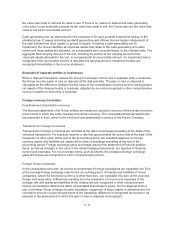 221
221 -
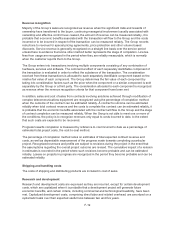 222
222 -
 223
223 -
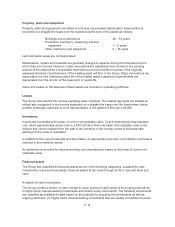 224
224 -
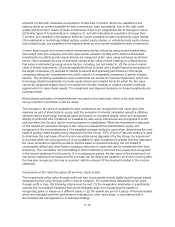 225
225 -
 226
226 -
 227
227 -
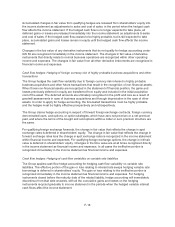 228
228 -
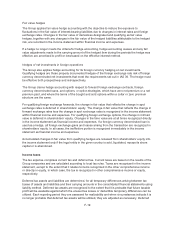 229
229 -
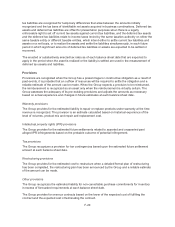 230
230 -
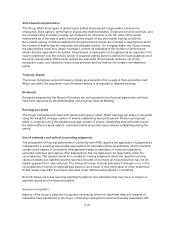 231
231 -
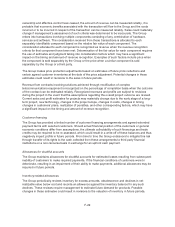 232
232 -
 233
233 -
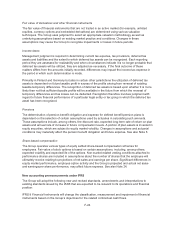 234
234 -
 235
235 -
 236
236 -
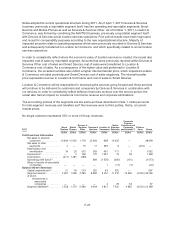 237
237 -
 238
238 -
 239
239 -
 240
240 -
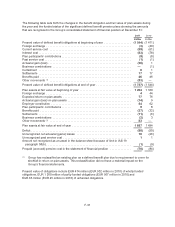 241
241 -
 242
242 -
 243
243 -
 244
244 -
 245
245 -
 246
246 -
 247
247 -
 248
248 -
 249
249 -
 250
250 -
 251
251 -
 252
252 -
 253
253 -
 254
254 -
 255
255 -
 256
256 -
 257
257 -
 258
258 -
 259
259 -
 260
260 -
 261
261 -
 262
262 -
 263
263 -
 264
264 -
 265
265 -
 266
266 -
 267
267 -
 268
268 -
 269
269 -
 270
270 -
 271
271 -
 272
272 -
 273
273 -
 274
274 -
 275
275 -
 276
276 -
 277
277 -
 278
278 -
 279
279 -
 280
280 -
 281
281 -
 282
282 -
 283
283 -
 284
284 -
 285
285 -
 286
286 -
 287
287 -
 288
288 -
 289
289 -
 290
290 -
 291
291 -
 292
292 -
 293
293 -
 294
294 -
 295
295 -
 296
296
 |
 |
Share-based compensation
The Group offers three types of global equity settled share-based compensation schemes for
employees: stock options, performance shares and restricted shares. Employee services received, and
the corresponding increase in equity, are measured by reference to the fair value of the equity
instruments as of the date of grant, excluding the impact of any non-market vesting conditions.
Non-market vesting conditions attached to the performance shares are included in assumptions about
the number of shares that the employee will ultimately receive. On a regular basis, the Group reviews
the assumptions made and, where necessary, revises its estimates of the number of performance
shares that are expected to be settled. Share-based compensation is recognized as an expense in the
income statement over the service period. A separate vesting period is defined for each quarterly lot of
the stock options plans. When stock options are exercised, the proceeds received, net of any
transaction costs, are credited to share issue premium and the reserve for invested non-restricted
equity.
Treasury shares
The Group recognizes acquired treasury shares as a deduction from equity at their acquisition cost.
When cancelled, the acquisition cost of treasury shares is recognized in retained earnings.
Dividends
Dividends proposed by the Board of Directors are not recorded in the financial statements until they
have been approved by the shareholders at the Annual General Meeting.
Earnings per share
The Group calculates both basic and diluted earnings per share. Basic earnings per share is computed
using the weighted average number of shares outstanding during the period. Diluted earnings per
share is computed using the weighted average number of shares outstanding during the period plus
the dilutive effect of stock options, restricted shares and performance shares outstanding during the
period.
Use of estimates and critical accounting judgments
The preparation of financial statements in conformity with IFRS requires the application of judgment by
management in selecting appropriate assumptions for calculating financial estimates, which inherently
contain some degree of uncertainty. Management bases its estimates on historical experience,
expected outcomes and various other assumptions that are believed to be reasonable under the
circumstances. The related results form a basis for making judgments about the reported carrying
values of assets and liabilities and the reported amounts of revenues and expenses that may not be
readily apparent from other sources. The Group will revise material estimates if changes occur in the
circumstances on which an estimate was based or as a result of new information or more experience.
Actual results may differ from these estimates under different assumptions or conditions.
Set forth below are areas requiring significant judgment and estimation that may have an impact on
reported results and the financial position.
Revenue recognition
Majority of the Group’s sales are recognized as revenue when the significant risks and rewards of
ownership have transferred to the buyer, continuing managerial involvement usually associated with
F-21
